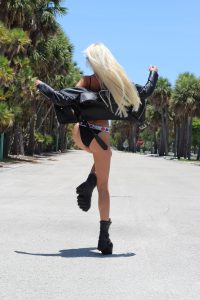While you may associate salmonella with poultry products like raw eggs and chicken meat, humans can also catch this bacterial disease from wild birds. Such transmission is uncommon, but salmonella infection can cause nasty symptoms like diarrhea, fever, and stomach cramps, and may even lead to hospitalization.
Following a recent salmonella outbreak in the western US that may be linked to wild songbirds, the Centers for Disease Control and Prevention has recommended sanitizing, and in some cases removing, bird feeders and birdbaths to curtail its spread. Here are a few steps you can take to keep your outdoor spaces safe for birds and humans alike.
Salmonella hotspots
The infection risk posed by bird feeders and birdbaths is double-pronged, the CDC warns. For one, these attractions appeal to wild birds by offering a snack or a place to cool off. This makes them ideal gathering spots for flocks of birds, allowing one sick bird to infect dozens, or even hundreds of others through direct contact, germ-tainted birdseed, or droppings.
[Related: Here’s the real story behind Alfred Hitchcock’s ‘The Birds’]
Salmonellosis, an avian disease caused by salmonella, almost exclusively stems from locations with bird feeders where birds congregate, reports the California Department of Fish and Wildlife. It notes that the recent outbreak has predominantly involved small members of the finch family like pine siskins and goldfinches.
The other risk posed by feeders and birdbaths is their proximity to the human world. When a sick bird visits, it can leave behind germs that will infect the next human to clean, refill, or tend to the site. For this reason, the CDC recommends washing your hands right after you handle a bird feeder or birdbath. It’s also important to clean these spots regularly.
How to clean and sanitize your bird feeder
- Pick an outdoor location to clean your feeder. If one isn’t available, use a laundry sink or a bathtub. Don’t use the sink in your kitchen or near where your food is prepared—doing so could risk cross-contamination.
- Empty your feeder of all birdseed. If you suspect there may be an infection in your area, throw the seed away—don’t dump it on the ground where other birds could find and eat it.
- Wash the feeder. Scrub it with soapy water and rinse to remove all dirt and particles.
- Disinfect the feeder. Soak it for at least 10 minutes in a 10% bleach solution—that’s nine parts water and one part bleach.
- Rinse the feeder thoroughly with water. Let it dry completely before refilling it with birdseed.
- Wash your hands with soap and water. Repeat this process weekly, or when your feeder is visibly dirty.
How to clean and sanitize your birdbath
- Empty the basin. Old water can be dumped on your grass, flowerbeds, or simply on the ground as long as it won’t form a stagnant pool that birds can bathe in.
- Remove debris. Dirt, bird droppings, and any other large particles can be cleaned away with a rag or a hose.
- Clean the birdbath. Scrub out any remaining dirt and algae using a 10% bleach solution. You can empty the resulting dirty water in an unused part of your yard.
- Rinse the basin. Use a hose to rinse the birdbath with clean water until the smell of bleach has mostly disappeared.
- Refill the birdbath after it has air-dried completely.
- Wash your hands with soap and water.
[Related: Bird songs got sexier during the COVID-19 shutdown]
If your area is experiencing an outbreak of avian-borne disease, it’s better to be safe than sorry. Reduce contact between wild birds and humans on your property by removing or covering feeders and birdbaths temporarily.
Salmonellosis can cause weakness, labored breathing, trouble flying, and even death in the wild birds it infects. Sick birds may sit on the ground for long periods of time, puff out their feathers, and show little interest in humans or other large animals approaching them. If you see a bird displaying any of these symptoms, or if you find a dead one, here’s what to do.
How to handle a sick or dead bird in your yard
- Keep your pets and children away from the bird. Don’t let anyone touch it, especially with bare hands.
- Call your state wildlife agency or a local wildlife rehabilitator and follow their instructions. Don’t handle the bird unless you’re explicitly told to.
- Cover your hands. If you’re instructed to move a sick bird or dispose of a dead one, always use gloves or wrap your hands with plastic bags. Wash your hands well with soap and water afterwards, even if they were well-covered.
- Remove all bird feeders and birdbaths from your yard for at least two weeks after the sighting. It also wouldn’t hurt to disinfect them using the directions above. If your birdbath is heavy or difficult to move, simply cover it with a tarp or garbage bag after cleaning and drying it.
- Research your local guidelines for reporting bird illnesses and deaths. Some agencies use this data to help track diseases and identify possible outbreaks.
[Related: How to help an injured bird]
Armed with this information, keep an eye out for signs of wildlife infection in your area. It’s never fun to see wildlife in distress, but your unfortunate encounter could help scientists and health experts save lives. With your birdbath and feeders clean, you can look forward to welcoming healthy birds back to your yard once the outbreak is under control.






